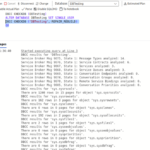In the ever-evolving landscape of web development, the synergy between Linux servers and WordPress has become a cornerstone for startups looking to establish a robust online presence. However, with the proliferation of cyber threats, ensuring the security of Linux servers hosting WordPress websites is paramount. This article delves into best practices for enhancing security measures on Linux servers in WordPress environments, providing startups with a comprehensive guide to safeguarding their digital assets.
Regular Software Updates and Patch Management
One of the fundamental pillars of Linux server security is keeping the operating system and software up-to-date. Regularly applying security patches is crucial for mitigating vulnerabilities that could be exploited by malicious actors. Startups should establish a systematic approach to update their Linux servers and WordPress installations promptly.
Implement Strong Access Controls
Enforcing robust access controls is essential for preventing unauthorized access to the server and WordPress admin panel. Start by configuring secure passwords, employing key-based authentication, and limiting access to only necessary personnel. Additionally, leveraging tools like sudo to manage user privileges enhances overall access control.
Firewall Configuration and Network Security
Utilizing firewalls to filter incoming and outgoing traffic adds an extra layer of defense against potential threats. Startups should configure the Linux server’s firewall to allow only essential services and ports, reducing the attack surface. Network security measures, such as VPNs and intrusion detection systems, can further fortify the server against unauthorized access attempts.
Secure File Permissions and Ownership
Ensure that file permissions and ownership are configured correctly to prevent unauthorized modifications or access to critical files. Startups should adopt the principle of least privilege, granting permissions only to the users and processes that require them. Regular audits of file permissions help identify and rectify any potential security gaps.
Encrypting Communication Channels
Securing data in transit is paramount for protecting sensitive information exchanged between users and the server. Implementing SSL/TLS certificates for encrypted communication channels ensures the confidentiality and integrity of data, especially during user login sessions and transactions on WordPress websites.
Backup and Disaster Recovery Planning
In the event of a security breach or data loss, having a robust backup and disaster recovery plan is indispensable. Regularly back up both the WordPress database and associated files, storing backups in secure, off-site locations. This proactive approach allows startups to swiftly restore their websites to a secure state in case of unforeseen incidents.
By the way, to ensure the seamless implementation of an effective Backup and Disaster Recovery Plan for your WordPress website, consider hiring a skilled WordPress developer at https://lemon.io/tech-stacks/wordpress/.
Malware Scanning and Antivirus Protection
Implementing malware scanning tools and antivirus software on Linux servers adds an extra layer of defense against malicious software. Regular scans help identify and remove potential threats before they can compromise the integrity of the WordPress environment. Startups should choose reputable security tools and keep them updated for optimal effectiveness.
WordPress Core, Theme, and Plugin Security
Security measures extend beyond the server to the WordPress application itself. Startups should consistently update the WordPress core, themes, and plugins to patch known vulnerabilities. Moreover, adopting the principle of using only well-maintained and reputable plugins reduces the risk of introducing security loopholes.
Security Audits and Penetration Testing
Regular security audits and penetration testing are proactive measures that allow startups to identify and rectify potential vulnerabilities before they are exploited. Engaging cybersecurity professionals or using automated tools can help assess the resilience of the Linux server and WordPress environment against various attack vectors.
Monitoring and Logging
Implementing robust monitoring and logging practices is critical for detecting and responding to security incidents promptly. Startups should set up comprehensive logging mechanisms to track user activities, server events, and potential security breaches. Real-time monitoring tools can provide alerts for suspicious activities, allowing for rapid intervention.
Two-Factor Authentication (2FA)
Enforcing two-factor authentication on both the server and WordPress login screens significantly enhances security. This additional layer requires users to provide a second form of verification, typically a temporary code sent to their mobile device, further reducing the risk of unauthorized access.
Employee Training and Awareness
Human error remains a significant factor in security breaches. Training employees and stakeholders on security best practices, including recognizing phishing attempts and maintaining strong password hygiene, is crucial for maintaining a secure Linux server and WordPress environment.
Conclusion
In the dynamic landscape of web development, where startups increasingly rely on the synergy between Linux servers and WordPress, prioritizing security is non-negotiable. By implementing the best practices outlined above, startups can fortify their Linux servers hosting WordPress environments against a myriad of cyber threats. As the digital realm continues to evolve, the commitment to robust security measures ensures that startups can navigate challenges with resilience, safeguard their digital assets, and build a trusted online presence for their audience.






